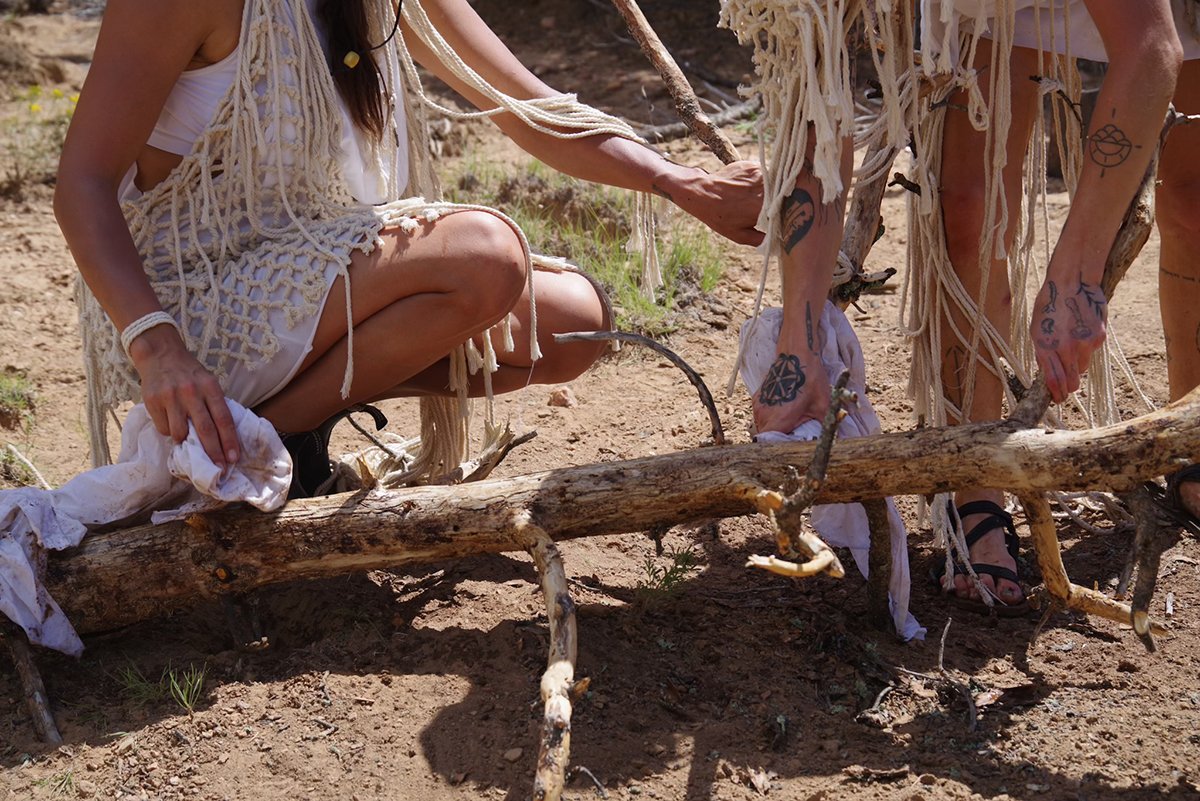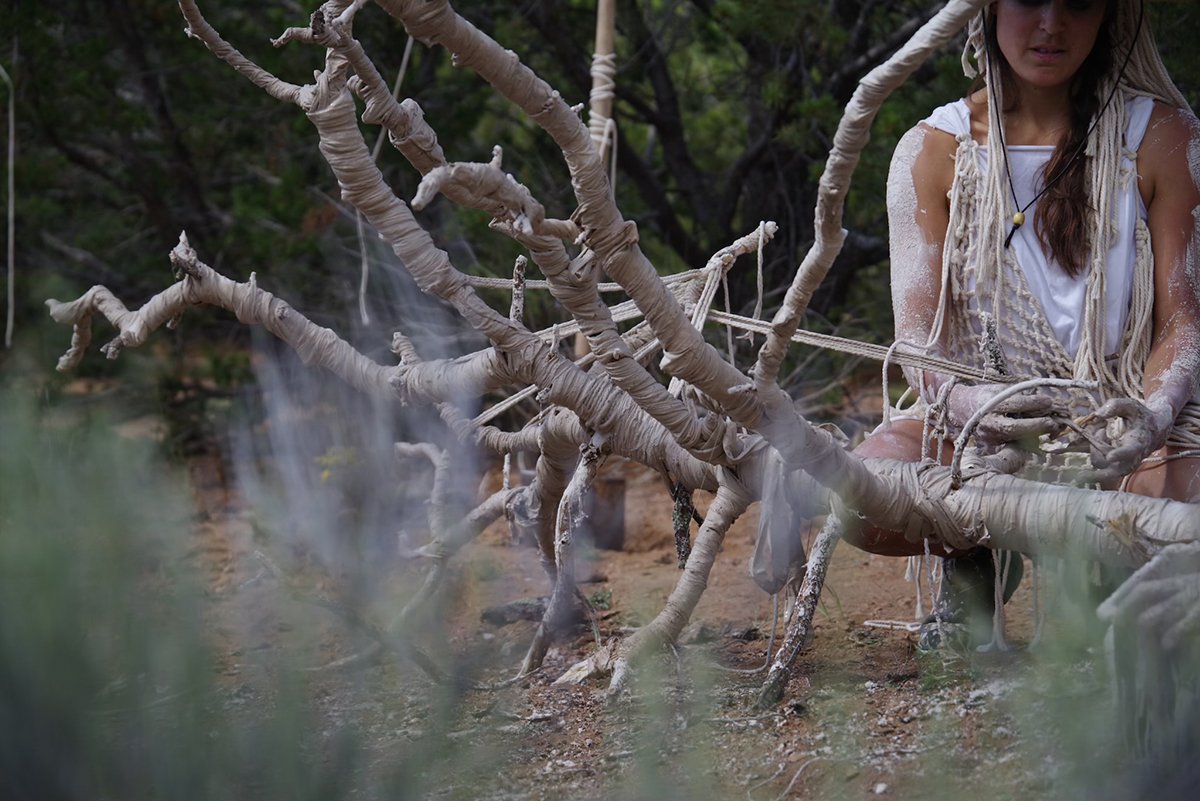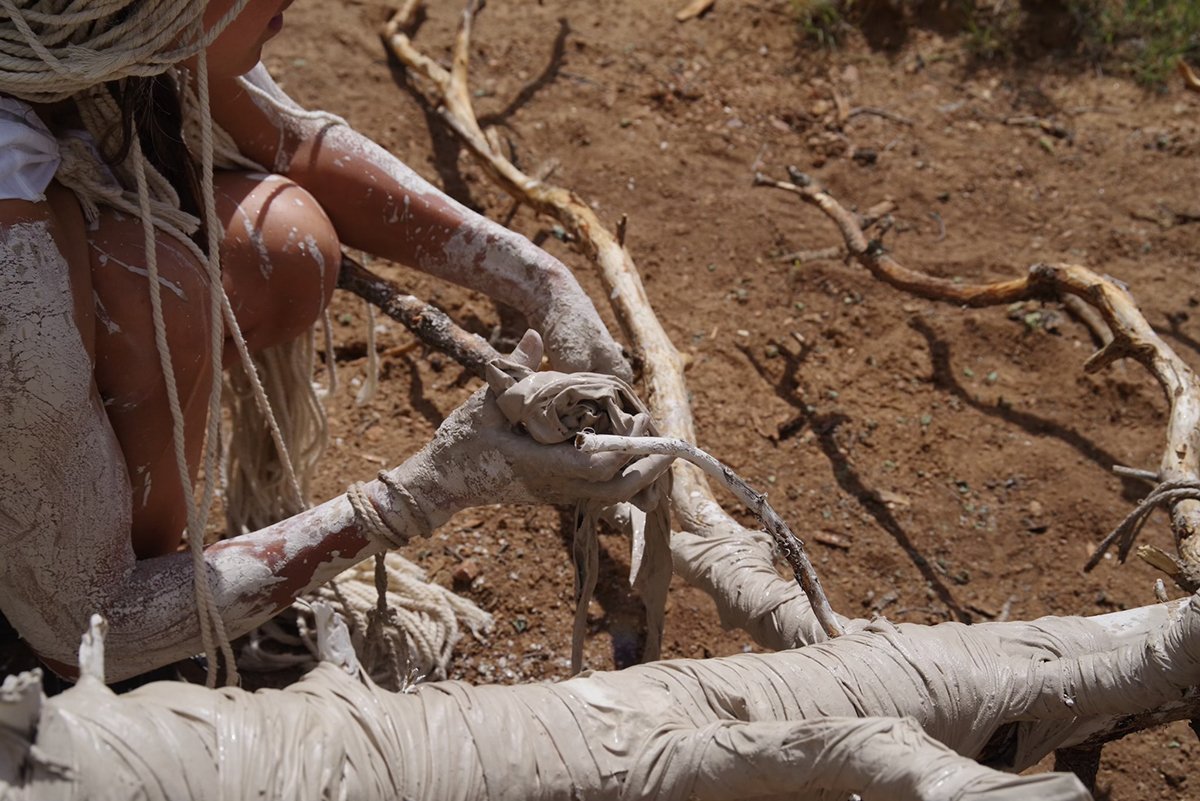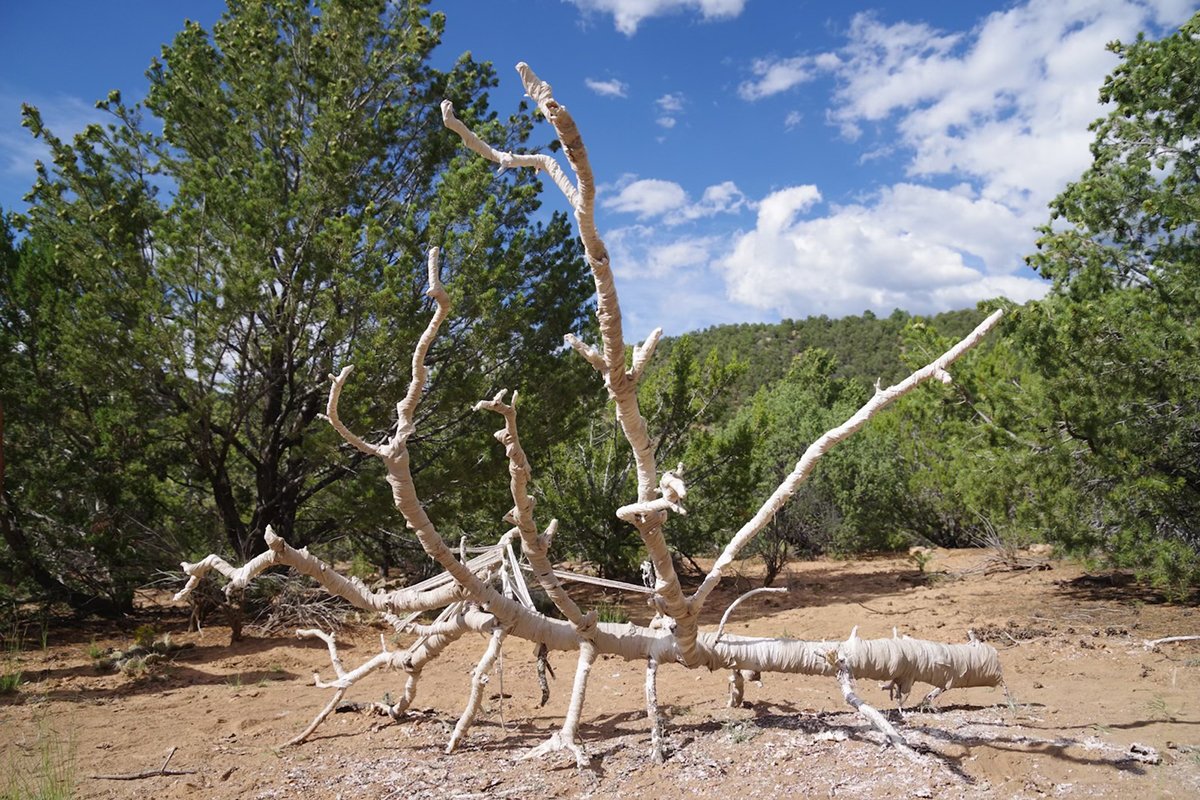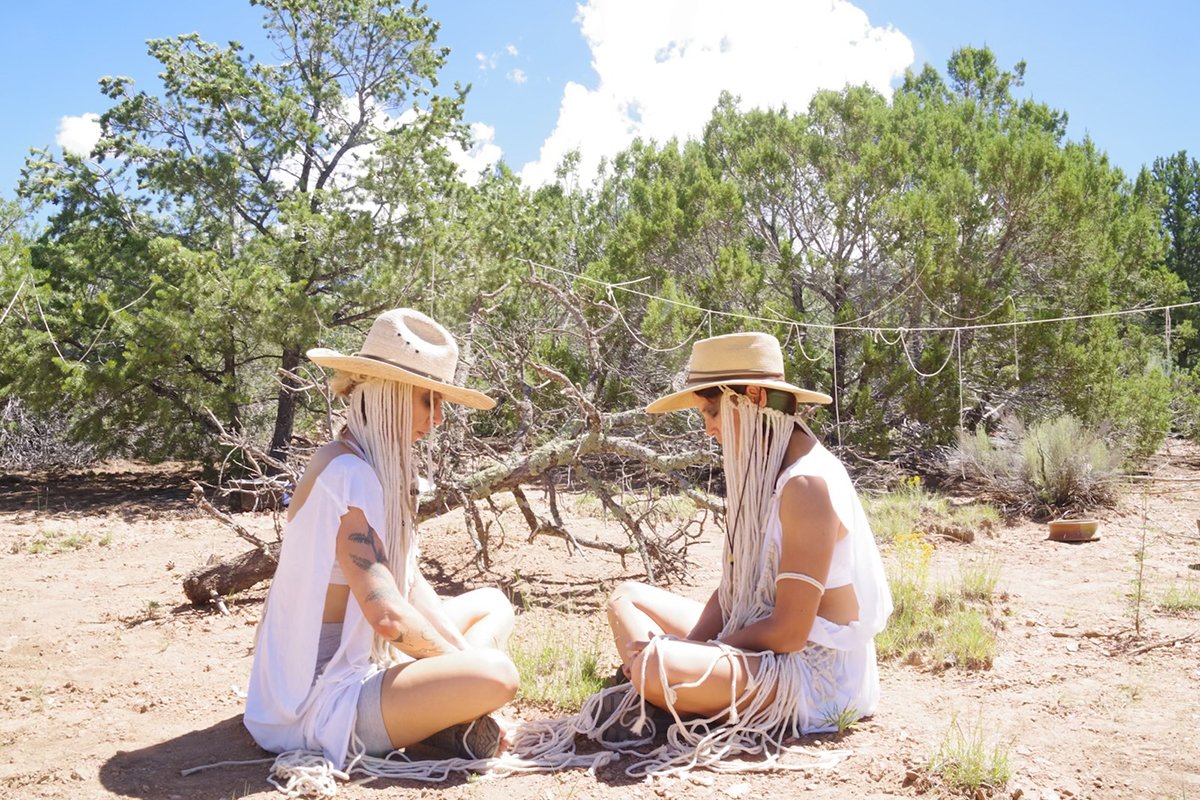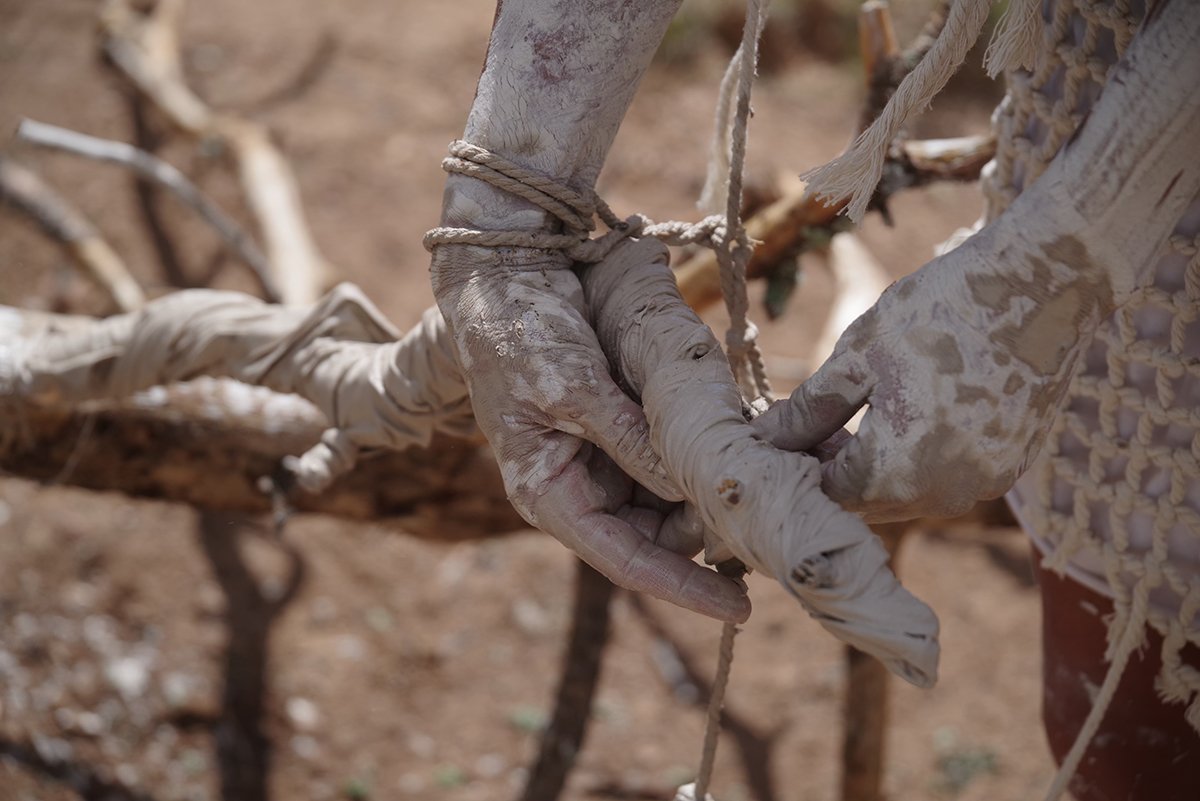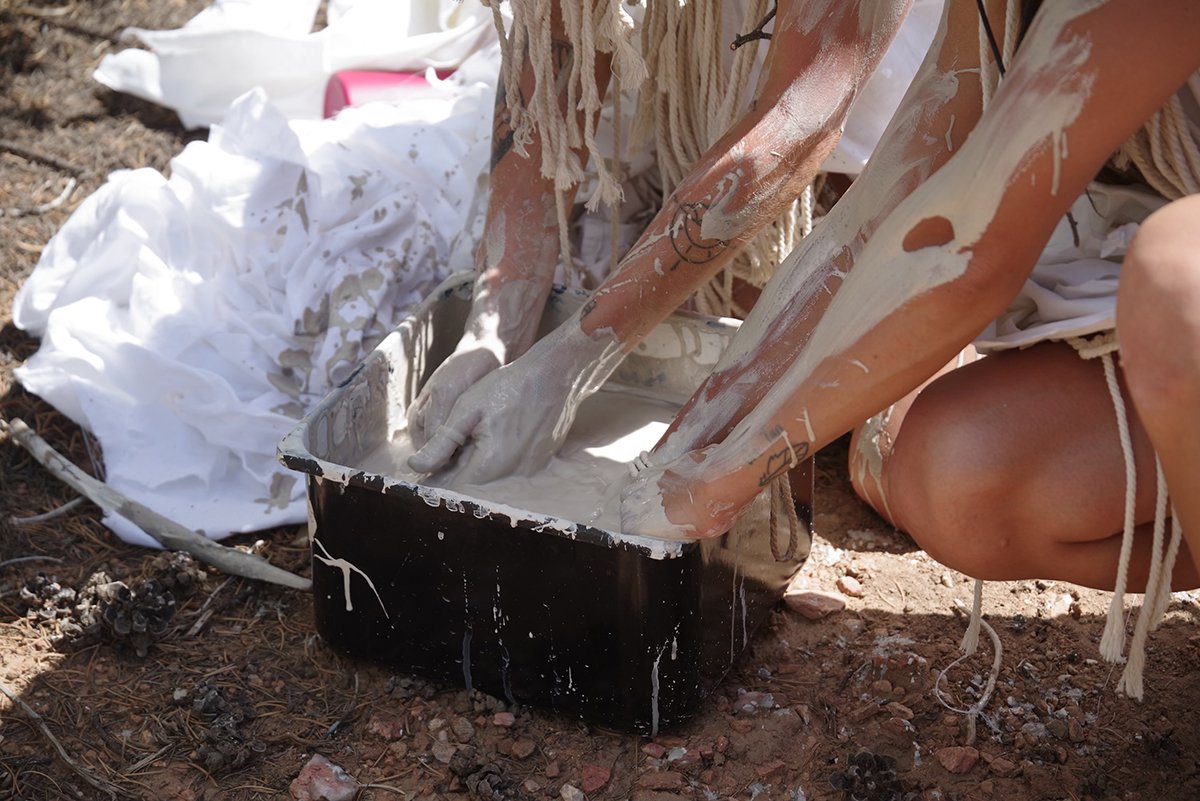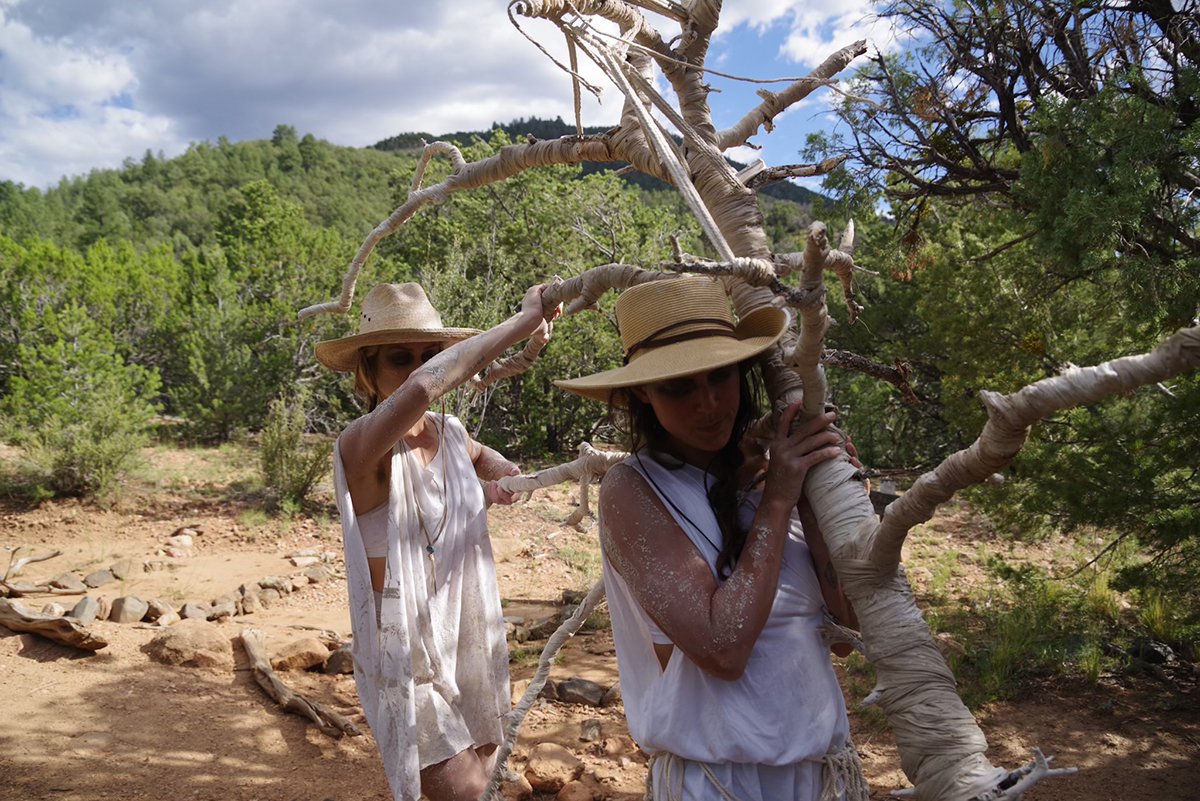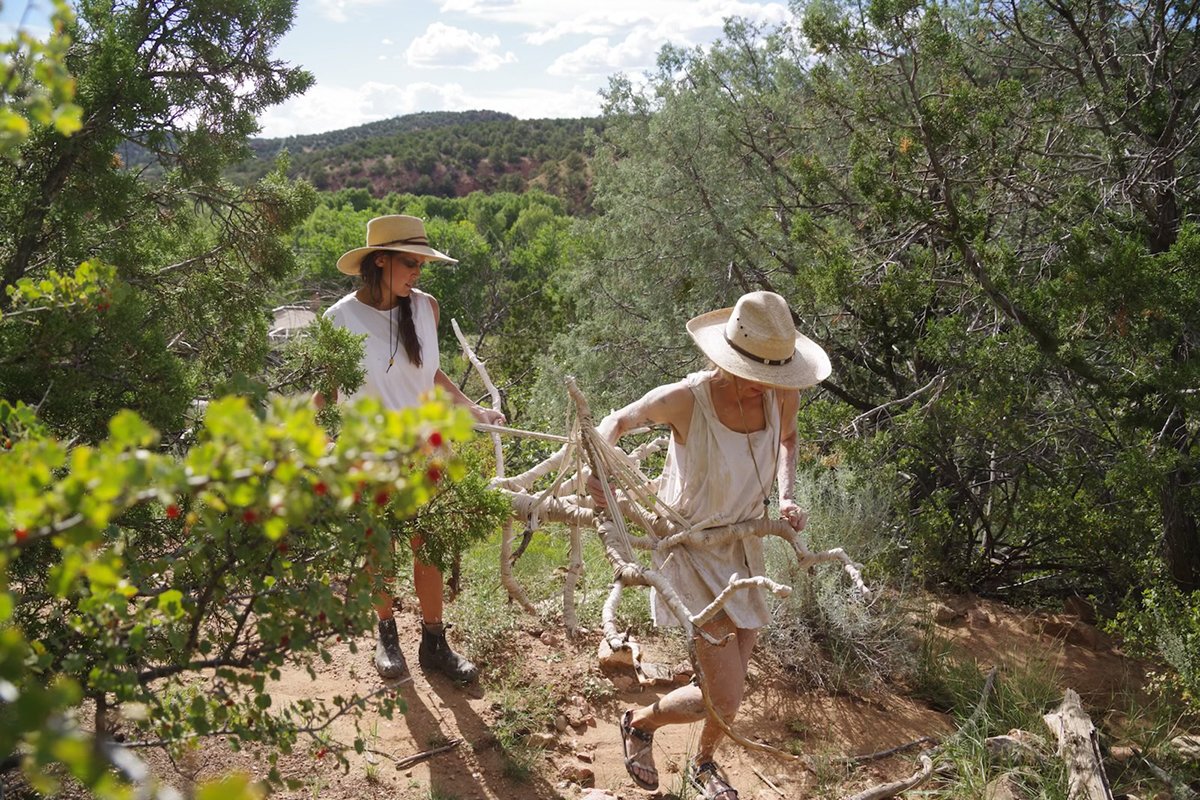to deep-love throughout time
A branch of The Piñon Project, the performance piece To Deep-love throughout time occurred on a blazingly hot day in August at the Audubon Center in Santa Fe NM, and sought to give actual and tangible space to the physicality of grieving for the death of Piñons. The performance was constructed to consider the embodied possibilities of ritual to address grief and mourning of coextensive species loss. Informed by centuries-old traditions of preparing the dead for successful transition into the next life, we worked to create and perform a day-long funerary ritual for a deceased Piñon tree. The performance diverged from norms of human centricity within death ritual practices by treating a tree with the same reverence and sanctity that one might a human body, and acknowledging their life as an essential member of our community.
The performance unfolded in a clearing encircled by a copse of juniper trees, with mycorrhizal crust bordering the perimeter. The trees were draped with a tangle of white weblike ropes, transporting viewers to a liminal space between the underworld of necessary decay and the visible earthliness of the moment before a dead tree becomes something else entirely. Two funerary performers deemed “The Underbeings,” were representational extensions of the mycelial underworld, and the performers were mantled in fringes of white ropes that caught and pulled bits of bark and soil with them circled one another in the shadow of the deceased Piñon body, redolent of stoicism and also deep agony until they eventually rise tangled together and begin to circle the body of the tree. “The Underbeings” then spent hours meticulously cleaning the tree, first removing all the bark strip by strip, then extensively washing the corpse with reverent care. The bark damaged by beetles was clarified in bowls of water, a forgiveness of sorts, and a washing clean of the inter-species violence that once was.
Afterwards, medicinal preparations made with lichens are soaked into the heartwood, gesturing towards community protection and healing, with every handful of bark they removed, “The Underbeings” circled in the direction of the sun moving through the sky, a time clock that indicated both the day and the eons. After the Piñon corpse was cleaned and nourished, “The Underbeings” began wrapping the tree in fiber dipped in white slip clay, completely covering the body. This portion took over an hour, and as the sun pounded down overhead, the clay protected both the tree corpse performers, offering a ritual shroud of earth away from the harshness of the desert environment. Upon completion of wrapping the tree-body, the corpse was lovingly carried off site for the final processing, and the ritual day was complete, allowing viewers, “The Underbeings,” and the land to dematerialize the deep and foreboding sadness of the tree’s initial passing and instead move forward with the knowledge that the body was profoundly respected and memorialized.
In the days following this performance, Submergence Collective had a lot to reflect on. The impact of a multi-hour performance exposed to the elements was dramatic, and our bodies were exhausted from both the physicality of ritual and the psychological weight of spending the arc of a day thinking as/with/of a dead body and all the life that this body had supported before meeting their demise through a sort of violence that humans are certainly intertwined with if not fully responsible. We spent hours clearing the space where we performed the ritual, to ensure that our accelerated ritual celebrating the breakdown of a body did not disturb the land on which it occurred, just as the slower decay of Piñon body left in place would not; but we were still left with the body of the tree wrapped in fiber and clay slip. Humans, we know, are symbolic creatures, and for the purpose of this ritual, we wanted to lean into the human propensity to wish to hold onto things, for better or worse, after they are gone.
Because of the preciousness humans and other animals feel around bodies, the next step of the performance is a ceramic technique called “burnout” where the entire tree-body will be fired in a large gas kiln. What remains in the kiln after the firing is an extremely fragile, hollow cast of the tree. All the slip clay-dipped-fiber once covering the tree is all that remains, as the tree-body will incinerate in the fire. From current research, we understand that a fire treatment is often necessary to remove bark beetles and other pathogens from the deceased trees, especially those more recently deceased than the tree body we incorporated in our performance. The hollow forms that remain, portray ghostly and fragile residue of a life once lived, but also a nod to the way that memory works, a shell of whatever once was after the grief rages through, but cherished and held on to, nonetheless.

